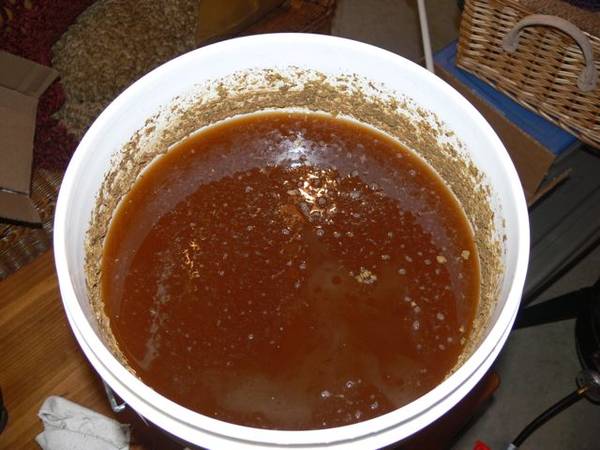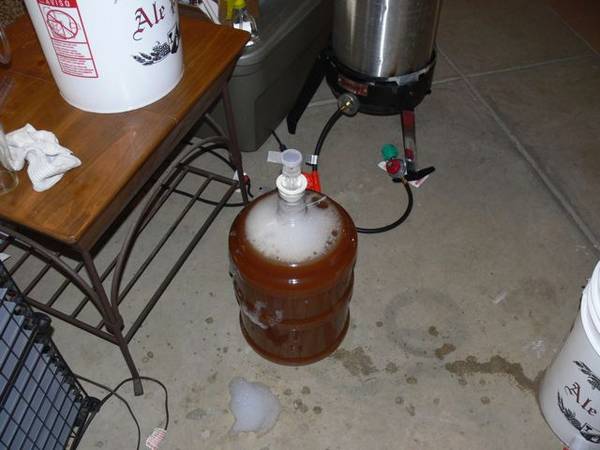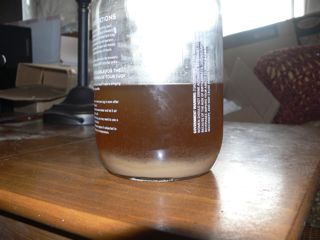Trooper-Orange
Well-Known Member
Let me start by saying thanks to the experienced forum members that help out new people like me. Much appreciated. 
So after one week in primary fermentation I racked my first batch of beer ever, to secondary. I don't think I will use a secondary in the future, I think I will just do one.
Anyway my question is about the gravity. I messed up my original gravity reading, it was totally inaccurate. (1.8) So unfortunately I don't know what the OG was. Per the recipe I used it should have been around 1.042 ~ 1.046. Well I just made sure I got an accurate gravity reading, and after one week in primary it was 1.018. My final gravity per the recipe should be around 1.010 ~ 1.012.
So my question is, am I on target? I assume two the three weeks in secondary will see some changes in gravity?
I am still learning, reading Palmers book, and still trying to wrap my head around gravity.
OK enough of that, time for pics:




So after one week in primary fermentation I racked my first batch of beer ever, to secondary. I don't think I will use a secondary in the future, I think I will just do one.
Anyway my question is about the gravity. I messed up my original gravity reading, it was totally inaccurate. (1.8) So unfortunately I don't know what the OG was. Per the recipe I used it should have been around 1.042 ~ 1.046. Well I just made sure I got an accurate gravity reading, and after one week in primary it was 1.018. My final gravity per the recipe should be around 1.010 ~ 1.012.
So my question is, am I on target? I assume two the three weeks in secondary will see some changes in gravity?
I am still learning, reading Palmers book, and still trying to wrap my head around gravity.
OK enough of that, time for pics:







